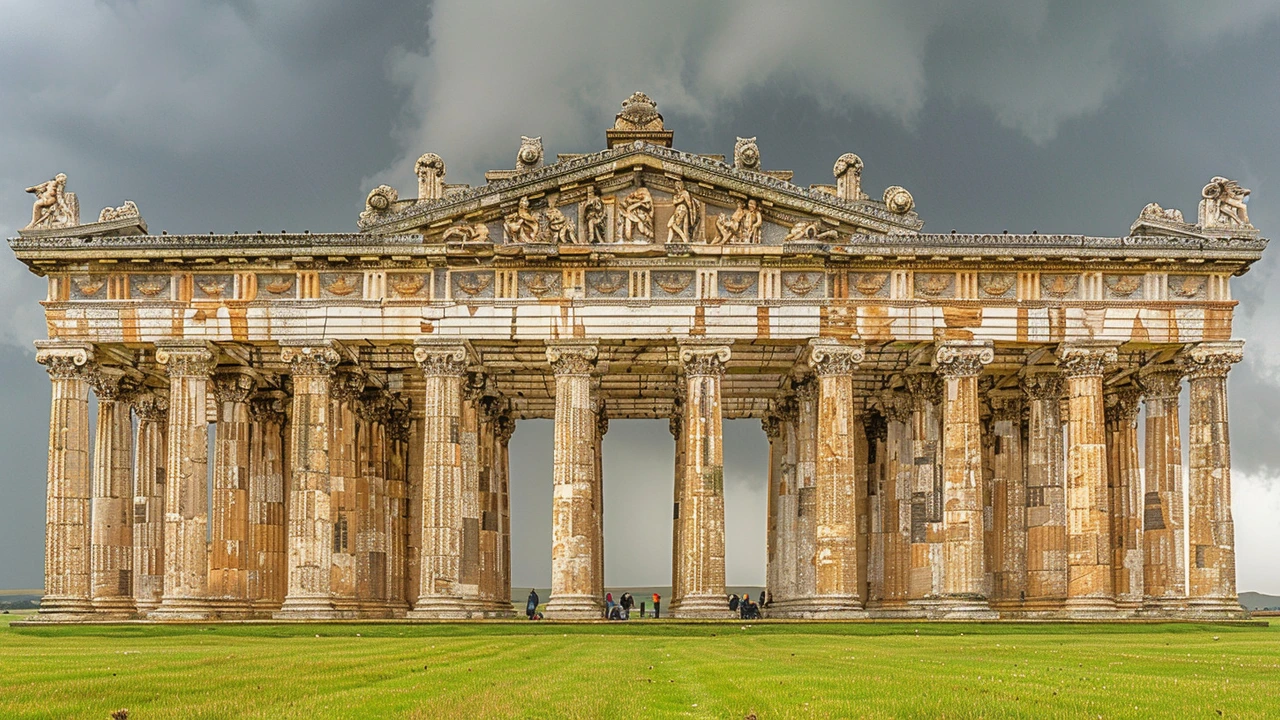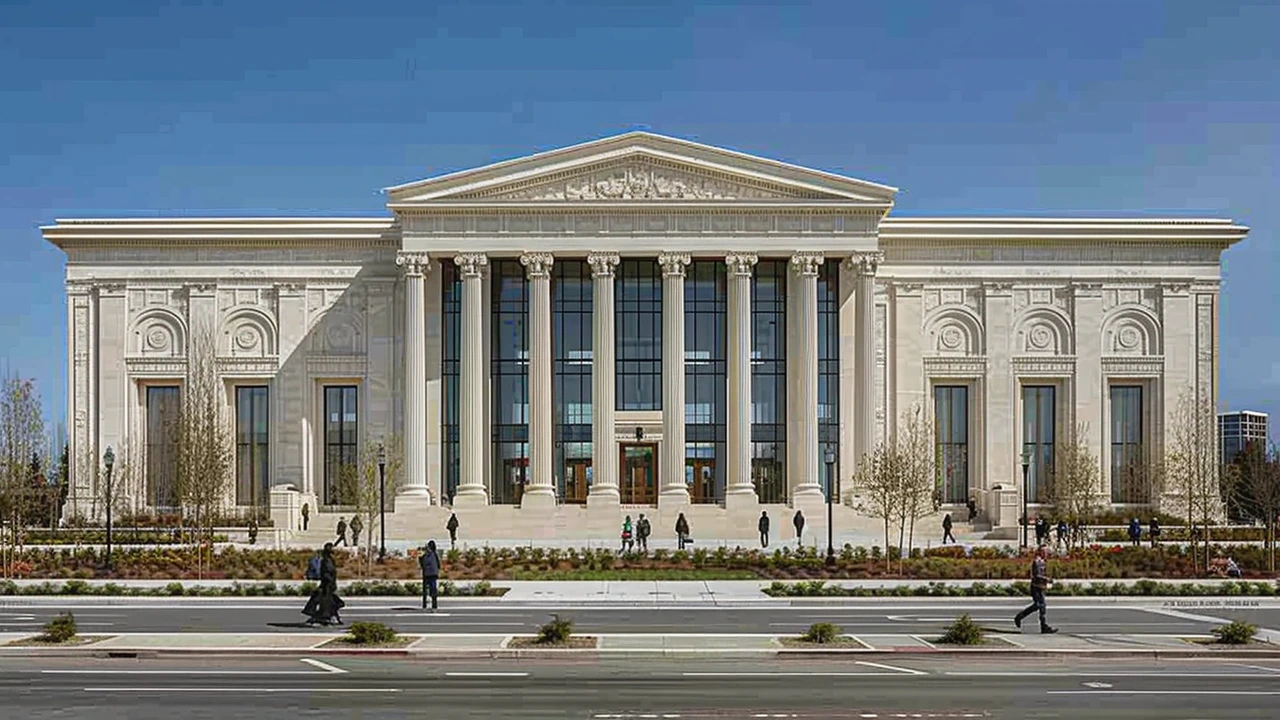Greek Revival Architecture: Classic Columns, Simple Rules
Greek Revival architecture is everywhere once you know what to look for. Born in the early 1800s, it copied ancient Greek temples—big columns, triangular pediments, and strong symmetry. Americans loved it for public buildings and homes because it felt dignified and easy to read from the street.
Spotting Greek Revival is straightforward. Look for a full-height porch with columns (Doric, Ionic, or Corinthian), a wide triangular pediment above, and a heavy entablature running across the top. Facades are usually painted white or light colors, have rectangular windows with simple surrounds, and position doors in the center with transom or sidelights. Pilasters at the corners and bold cornices are common, too.
Practical ID Tips
If you’re out walking, use these quick checks: count the columns, check the roofline for a pediment, and see if the building feels balanced left to right. Many small-town courthouses and older houses use a simplified form: one or two-story porticos instead of full temple fronts. Interiors often keep classic proportions—tall ceilings and rigid room layouts—so the style reads both outside and inside.
Updating or Restoring Greek Revival
Thinking about bringing Greek Revival touches into a home? You don’t need a museum budget. Swap thin porch posts for wider column-like posts, add a simple pediment over the entry, and use a bold cornice or molding to mimic the entablature. Keep paint shades light and trim crisp. For historic restoration, match original woodwork profiles and repair rather than replace key elements like columns, balustrades, and moldings.
Materials matter. Original homes used wood or local stone and often had simple painted finishes. Modern builds can use fiber-reinforced columns and composite trim that look right but last longer and need less upkeep. If a house is historic, check local preservation rules before changing facades.
Why the style still works: Greek Revival reads as clean, strong, and formal without being fussy. That’s why architects borrow its parts today—entry porticos on suburban homes, symmetrical facades in civic buildings, or simple columns on renovated porches. It gives a sense of order and permanence that many homeowners and towns still want.
Want to see good examples? Look for old courthouses, historic districts, and 19th-century town halls. When visiting, pay attention to column capitals, cornice details, and how the door is framed. Those small details tell whether a building is true Greek Revival or just inspired by it.
Use these tips to spot, adapt, or restore Greek Revival features with confidence. The style is simple to read and surprisingly flexible, so a few thoughtful changes can give a modern home a timeless face.
Common mistakes people make: adding skinny decorative columns that look fake, overdoing ornate detail not found in original examples, or using dark paint that hides the temple-like look. Keep proportions right: columns should match the height of the porch, and the pediment should sit above a clear entablature. When in doubt, study nearby historic houses for correct scale and detail.
Try a small change today.

Exploring the Beauty and History of Greek Revival Architecture
This article delves into the captivating world of Greek Revival architecture, a design style that mimics the grandeur of ancient Greek structures. It discusses the origins, characteristics, and enduring influence of this architectural style in modern designs. The article also provides insights on how to identify Greek Revival features and their significance in the historical context of architecture.
Read more
Exploring Greek Revival Architecture: A Journey Through Time and Style
Greek Revival Architecture celebrates the grandeur of ancient Greek design. This article uncovers the elegance and historical significance of this architectural style. It explores its characteristics, origins, notable examples, and preservation efforts. Discover how Greek Revival is more than just a style; it's an homage to the intellectual achievements of ancient Greece. Whether you're an architecture enthusiast or a curious learner, this journey through Greek Revival architecture promises insightful revelations.
Read more
Greek Revival Architecture Influence: Modern Building Style and Design Techniques
Hey folks! It's always fascinated me how the grandeur of ancient Greek temples can still be seen in our modern buildings. You know, the iconic columns, the symmetrical beauty – it all screams Greek Revival architecture to me. I've noticed this style lacks the fussiness you might find in other designs; it's got a straightforward elegance that's as refreshing today as it was back then. I'm eager to dig into how this timeless aesthetic continues to shape our contemporary structures—and trust me, its influence runs deep. So, let’s explore together how the principles of Greek Revival architecture play a surprising role in today's building styles!
Read more
Greek Revival Architecture: The Perfect Blend of History and Art
As a blogger captivated by the intersection of history and art, I'm enamored by Greek Revival Architecture. In my latest post, I delve into this fascinating blend of antiquity and artistic expression. We'll explore its historical roots and distinctive characteristics, celebrating how it has shaped the architectural landscape. Join me on this captivating journey, where we honor the past while appreciating Greece's enduring influence on modern architecture.
Read more
Greek Revival Architecture: Where History Meets Style
Hello there! If you're like me and have a fascination for architectural styles, you'll love today's post. It's all about Greek Revival Architecture: Where History Meets Style. This architectural style's history and influence are broad and fascinating. Join me as we explore its signature elements, historical significance, and beautiful examples that have stood the test of time. It's a journey through architecture that unites the classic elegance of ancient Greece with contemporary design innovations.
Read more